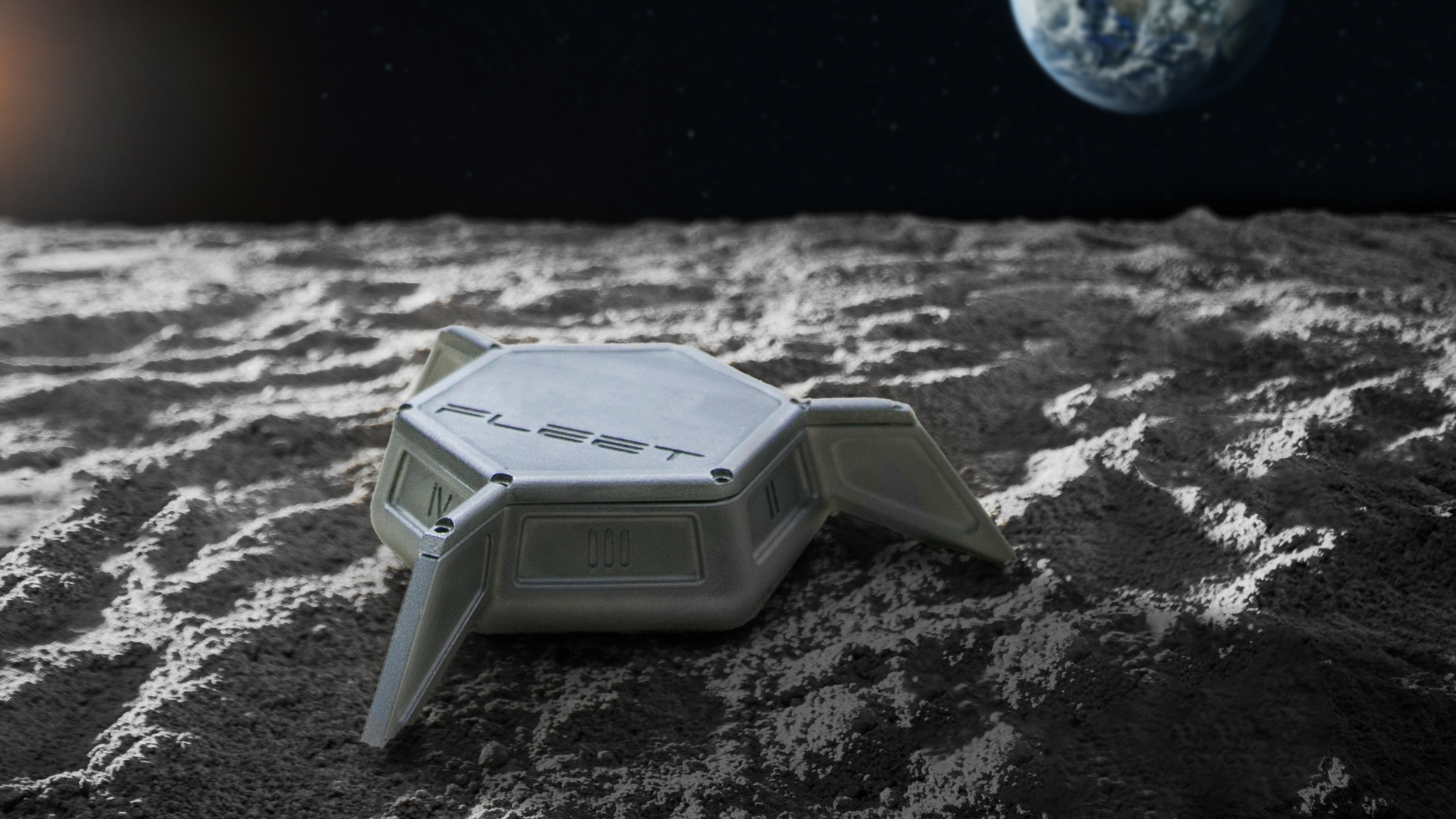Moonquake-hunting 'SPIDER' probes could detect lunar temblors on NASA Artemis missions
The early-stage mission hooks into NASA's Artemis program.

A spider web-like network of earthquake stations is aiming for the moon.
Australian company Fleet Space received funding to develop its Seismic Payload for Interplanetary Discovery, Exploration and Research, or SPIDER, to detect seismic quakes on the moon in the future. The early-stage $4 million AUS ($2.65 million USD) contract is not for an imminent landing mission, but for technology development. The eventual goal is to bring a trio of seismic monitors to the moon for one lunar "day" (14 days on Earth) to help locate valuable resources below the lunar surface.
SPIDER aims to record moonquakes continuously for up to 14 days and will launch "aboard a commercial lander" that has not been selected yet. The test of compact geophysical equipment will be useful not only for the moon, but also for remote environments on Earth or Mars "We are explorers with a mission to revolutionize mineral exploration from Earth to the moon and Mars," the company wrote in a statement.
Related: Moonquakes rattle the moon as it shrinks like a raisin
Fleet Space CEO Matthew Pearson stated that the Australian Space Agency funding will be key to helping his country support the NASA-led Artemis Accords moon program.
"We are poised to be the first Australian technology to touch down on the surface of the moon, supporting humanity's efforts towards [lunar exploration] and aligning with NASA's Artemis program, with a future vision of Martian exploration supporting the hunt for life beyond our planet," Pearson said in a statement.
Australia was one of the first signatories of the Artemis Accords, a NASA framework for moon exploration as well as an effort to establish international peaceful norms for space exploration. (The addition of India and Ecuador in recent weeks brought the number of participating nations to 27.)
Get the Space.com Newsletter
Breaking space news, the latest updates on rocket launches, skywatching events and more!
NASA aims to bring humans to the moon's south pole in 2025 or 2026 with the Artemis 3 mission, and has funded numerous robotic payloads under its Commercial Lunar Payload Services program that may see its first mission touch down as soon as this year. The moon-circling Artemis 2 has a crew in training, and a launch date of November 2024.
Fleet is funded under the Australian government's $40 million AUS ($26.45 million USD) "moon to Mars initiative" aiming to help countries get ready for moon exploration. It's similar to NASA's CLPS or Canada's Lunar Exploration Accelerator Program (LEAP), to name a couple of Artemis signatories.
Other recent news by Fleet includes raising $50 million AUS ($33 million USD) in a Series C fundraising round, building out an ExoSphere set of satellites to scan for minerals in Earth orbit, and signing with Australia's Defense Space Command for a demonstrator satellite communications system.
The first lunar seismometers were deployed by the Apollo program astronauts between 1969 and 1972 during several of the program's six successful landing missions. All remaining functional seismometers were turned off in 1977 to save money, despite having a modest yearly cost of $1 million ($5 million in 2023 dollars), according to the New York Times.
Join our Space Forums to keep talking space on the latest missions, night sky and more! And if you have a news tip, correction or comment, let us know at: community@space.com.

Elizabeth Howell (she/her), Ph.D., was a staff writer in the spaceflight channel between 2022 and 2024 specializing in Canadian space news. She was contributing writer for Space.com for 10 years from 2012 to 2024. Elizabeth's reporting includes multiple exclusives with the White House, leading world coverage about a lost-and-found space tomato on the International Space Station, witnessing five human spaceflight launches on two continents, flying parabolic, working inside a spacesuit, and participating in a simulated Mars mission. Her latest book, "Why Am I Taller?" (ECW Press, 2022) is co-written with astronaut Dave Williams.









